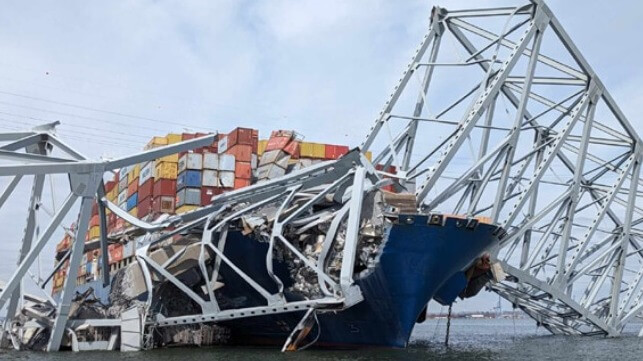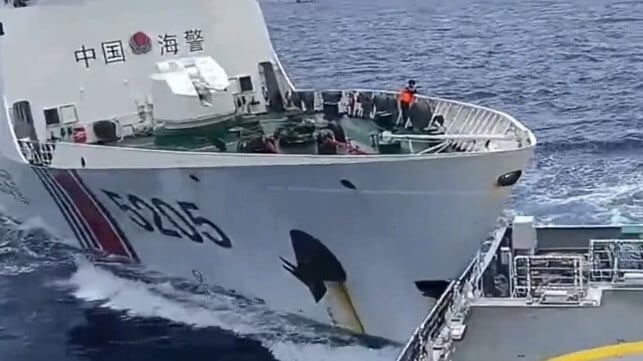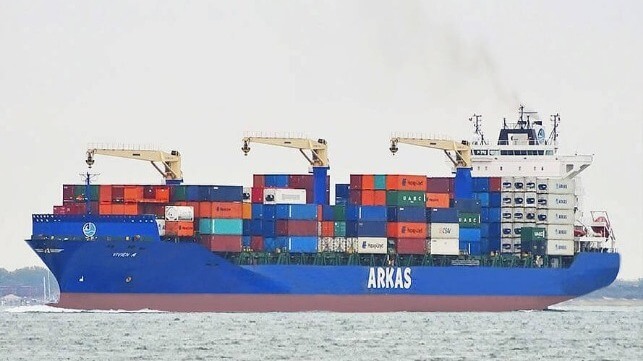Iranian Naval Forces Go Dark
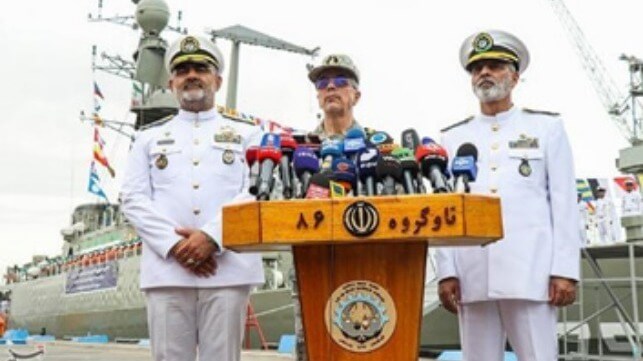
As befits a nation with pretensions to being a global power, Iran has two navies - whereas most other nations have just the one.
The regular Islamic Republic of Iran Navy (the Nedaja) relies on a fleet of surface ships and submarines mostly procured during the reign of the Shah. It also domestically produces copies of these vessels or of equally old Soviet-era designs. The Nedaja attempts to modernize its fleet by fitting upgraded missiles and electronic systems, but the platforms themselves are old and unreliable, and systems are poorly integrated. In consequence, the Nejada has a perhaps unrivaled record for losing ships: in recent years IRIS Sahand (F74) and IRIS Talayieh both keeled over while in dock, IRIS Deylaman (F78) hit a breakwater in the Caspian Sea and sank, IRIS Kharg (A431) caught fire off Jask and IRIS Konarak (A1403) was severely damaged by a missile fired from IRIS Jamaran (F76). The three Kilo Class submarines have suffered bad corrosion in the warm waters of the Gulf, with two currently out of the water under repair. But the Nedaja remains undaunted, being particularly proud of its eight-month circumnavigation of the globe completed by the 86th Flotilla (IRIS Dena (F75) and the tanker IRIS Makran (K441)) in May 2023. It also retains a potent fleet of small missile boats and submarines for use in coastal waters.
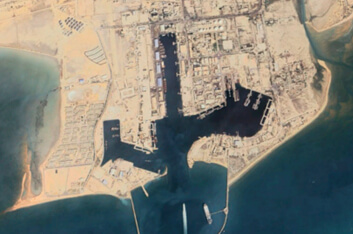
Bandar Abbas Naval Base (Google Earth, Jan 11, 2024), with IRIS Makran (K441) docked on the outer harbor jetty
The Islamic Revolutionary Guard Corps’ Navy (the Nedsa), has a reputation for deploying small and fast attack craft, using swarm tactics. It has also developed unconventional naval designs (of unproven utility), including twin-hull missile corvettes such as the Shahid Soleimani (FS313-01) and the Abu Mahdi al-Muhandis (PC313-01). It deploys intelligence-gathering ships (the MVs Saviz and Behshad), and two converted Panamax container ships, each capable of launching missiles and drones and able to provide logistic support to Iran’s Resistance of Axis allies abroad. While the Nedsa formerly kept itself to the waters of the Gulf, it is now cruising further afield, with the Shahid Mahdavi (110-3) having recently transited through the Straits of Malacca and the Chagos Archipelago on a 39-day deployment. Another such long-range deployment is believed to be imminent.
The Iranians gave some publicity to the Shahid Mahdavi Diego Garcia cruise, but this was the last such press release from official sources covering a naval deployment. The Nedaja used to announce the despatch of flotillas to the Red Sea and Gulf of Aden, and greeted the return of each flotilla via a port call in Salalah after what was normally a 90-day rotation. Since the 97th Flotilla sailed from Bandar Abbas for the Gulf of Aden in February, no further deployments have been advertised. Social media posts covering naval matters have also dried up. Perhaps in response to the presence of two US carrier strike groups in the region, naval movements have now gone dark - suggesting the Iranians no longer want to help out their adversaries by announcing what ships are where. Analysis of satellite imagery of the naval harbor in Bandar Abbas continues however to give interested observers a good idea of what vessels are in the harbor - and which may be out at sea.
Echoing the defensive - perhaps worried - the posture of Iran’s naval forces, both Brigadier Alireza Sabahi Fard, the Iranian Air Defence commander, and Air Force commander Brigadier Hamid Vahedi have recently made atypical statements saying their forces are "ready to repel encroachments."
The opinions expressed herein are the author's and not necessarily those of The Maritime Executive.
